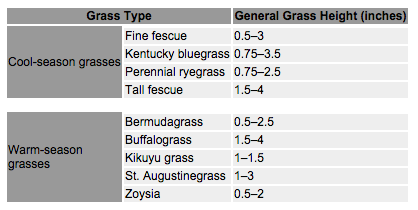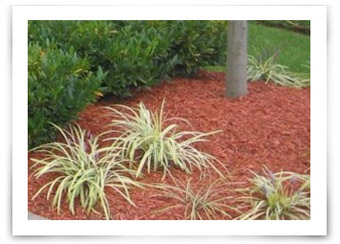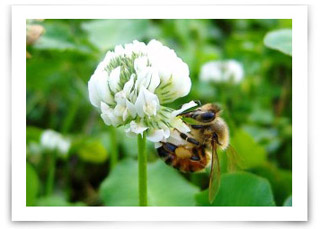The Importance of Keeping Grass Low
Noticing that the grass needs to be cut seems simple enough yet there may be additional details to consider. How often should grass be cut? How does grass length affect the health of the lawn? In what situations would an ideal length of grass differ? What happens if grass is too long, or too short? Let's dive into these to help ensure that you are taking optimal care of your lawn.

Height of Cut Grass
How frequently should grass be cut? Does it really just depend on the height of the grass? Time of year, temperature, amount of rain, and health of the grass will all have some effect on how fast the grass is growing and, thus, how often it needs to be cut. Typically, the suggested height for most commonly used grasses (fescues, ryegrasses, bluegrasses) is two to three inches. For some warm-season grasses, like zoysia grass, this length can be closer to 1 to 2 inches. The significant range in these heights accounts for the differences in timing that we mentioned earlier.
Height and Health of a Lawn
Generally, the depth of grass roots mirrors the height of the grass. Thus, when grass isn't as healthy (for example, in periods of drought), it is better to let grass grow taller and, in doing so, to strengthen the root systems. However, cutting grass too low thins the grass roots and makes it easier for weeds to invade. A problem on the other extreme occurs when grass is left to grow so tall it forms seed heads. When this happens, a plant is using up energy to create seeds that would otherwise be directed into the roots and other plant growth. Because of this, you want to cut the grass before it starts bearing seeds as this weakens the overall plant health. Another problem when grass gets too long is that it attracts more insects and small animals. Also, keeping your mower blade sharp makes for a better cut and helps to ensure that your grass is healthy and looks green and even.
The “One-Third Rule”
Many suggest the "one-third rule" of removing the top 1/3 of the height of the grass. For example, cutting healthy grass that is three inches long down to two inches (cutting off the top 1/3 or 1 inch) ensures you aren't cutting too much or too little. If a lawn has been left uncut for some time, you may need to do two cuttings using the "one-third rule" separated by three to seven days to return the grass to the recommended length.
In working to keep your lawn at the right height and healthy, we also suggest—unless your grass is wet or quite long—that you leave the grass clippings on the lawn to help serve as a fertilizer. This also saves you from having to dispose of all of the clippings. You may want to consider a commercial mower with options like a mulch kit. For more information on the Wright Mulching Kit and some of the best mowers in the industry, call Wright Manufacturing (toll free) at (301) 360-9810 or visit your local Dealer .


